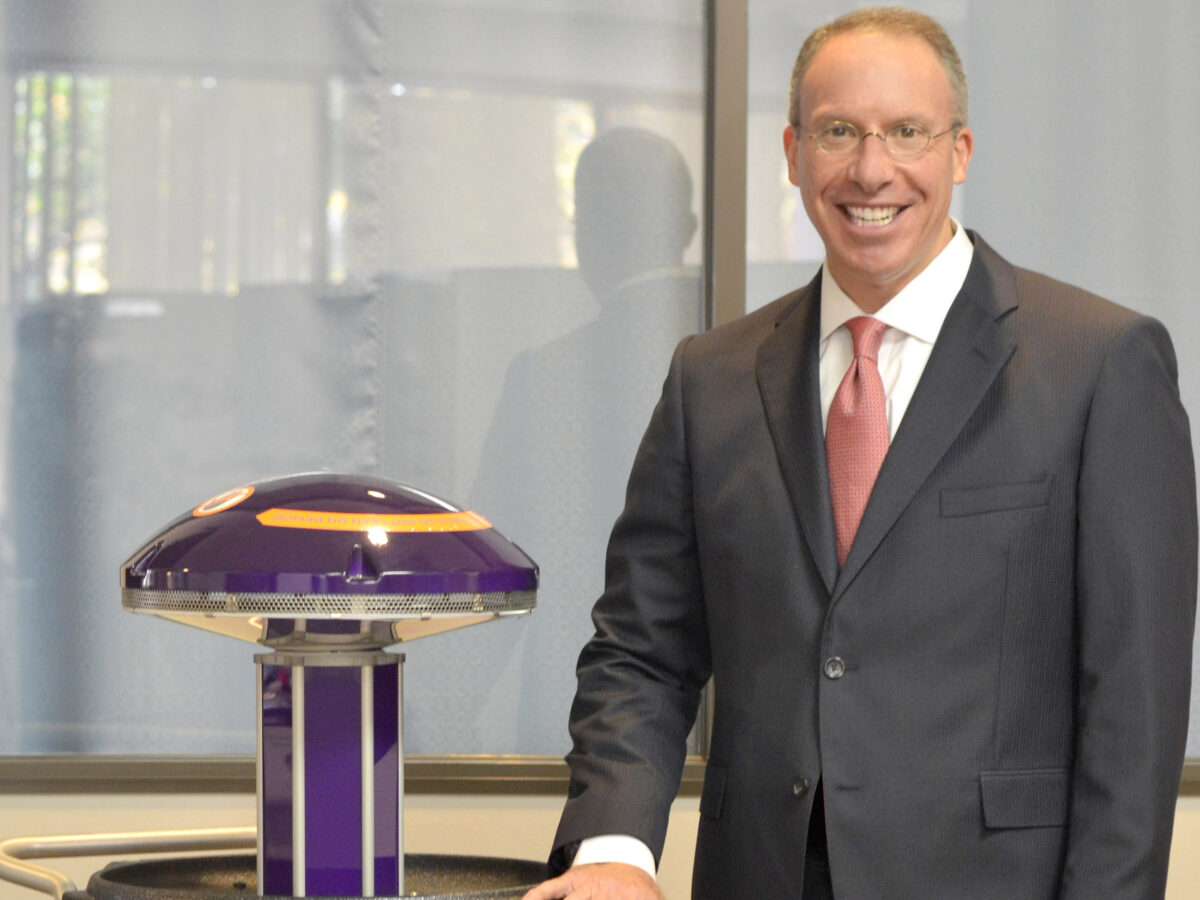Morris Miller

Morris Miller ’84 was never what you’d call a sci-fi geek.
“Don’t tell my friends who were Dr. Who fans!” he says, almost apologetically.
Indeed, Miller was far more passionate about business than Battlestar. Which is why it’s particularly amusing that, today, he’s the champion of a medical device that not only functions on light-saber-esque technology, but is a dead ringer for R2D2’s BFF.
More about that in a moment. First, it’s important to understand that while Miller might have believed he was bound for a career in medicine during his Exeter days (his father and uncle are physicians), entrepreneurial zest runs in his veins. Case in point: At the tender age of 5, Miller picked his neighbors’ pecans from their yards in San Antonio, bagged them, sold them back to their owners and then successfully charged them an additional $4 shelling fee.
He went on to add other jobs to his resume: attorney, investor, publisher, CEO, and co-founder of Rackspace Hosting — a cloud management company known for giving new ideas room to grow. But the common thread in his career is that of a “lifelong learner,” for which he credits his time at Exeter.
“The great thing about Exeter was everyone there was smarter than me,” he says. “You had resources beyond what anybody could ever deserve, and your obligation was to use that for the greater good. It’s not enough to enrich yourself, you have to enrich the community.”
Which brings us back to R2D2, or rather Xenex, the “Germ-Zapping Robot.” Today, Miller is the CEO of Xenex Disinfection Services, a company that produces “pulsed xenon UV disinfection” droids that quickly and easily kill some of the deadliest microbes in healthcare settings, such as MRSA and C. diff.
Miller first heard of Xenex in July 2009, when Johns Hopkins epidemiologists Dr. Mark Stibich and Dr. Julie Stachowiak approached him with a concept: What if you could harness a full spectrum of UV light beyond what could be emitted from a mercury vapor lamp? What if you tapped xenon for the job? And what if it was portable and push-button easy? The answer: You’d get a pathogen-obliterating machine that is 25,000 times more powerful than any of its predecessors, with the capacity to prevent two million infections and save 100,000 lives a year, just in the U.S.
Xenon was already in car headlamps in high-end makes, but was it the future of infection control? Could it beat bleach — still the most used disinfectant in hospitals?
They tested their theory through an independent lab in Round Rock, Texas. When initial tests on approximately 2,000 germ samples came back, every one was dead.
By 2012, within the first 90 days on the market, doctors were coming to Miller with stories of 100 percent drops in quarterly infection rates from healthcare-associated infections in rooms where the robot was used. Today, hospital-wide, rates of infection are often reduced 50 to 80 percent after running the robot, which can disinfect 30-60 rooms a day at the cost of about $1.50-$3.50 a room (a robot costs approximately $100,000). When the robot stops just one infection, it pays for itself for a month.
The significance of disinfection was made clear during the Ebola outbreak last fall. Texas Health Presbyterian Hospital Dallas, where Thomas Eric Duncan, the nation’s first Ebola patient, was treated, uses Xenex robots, which Miller says shined a spotlight on all infection control.
“The chances of you getting Ebola in the U.S. are very low,” Miller says. “On the other hand, the chances of you getting one of these other superbugs — MRSA, EV-D68, CRE, C.diff — is very high. So [the Ebola cases] allowed us to get hospitals focused on doing what they need to do to prevent the infections that will actually affect many more people.”
And Miller intends to do just that, enriching the community by taking Xenex global. As for enriching himself, he says, “There are always lessons worth reminding yourself of — you’re never a finished product.”
By Jennifer Kaleba